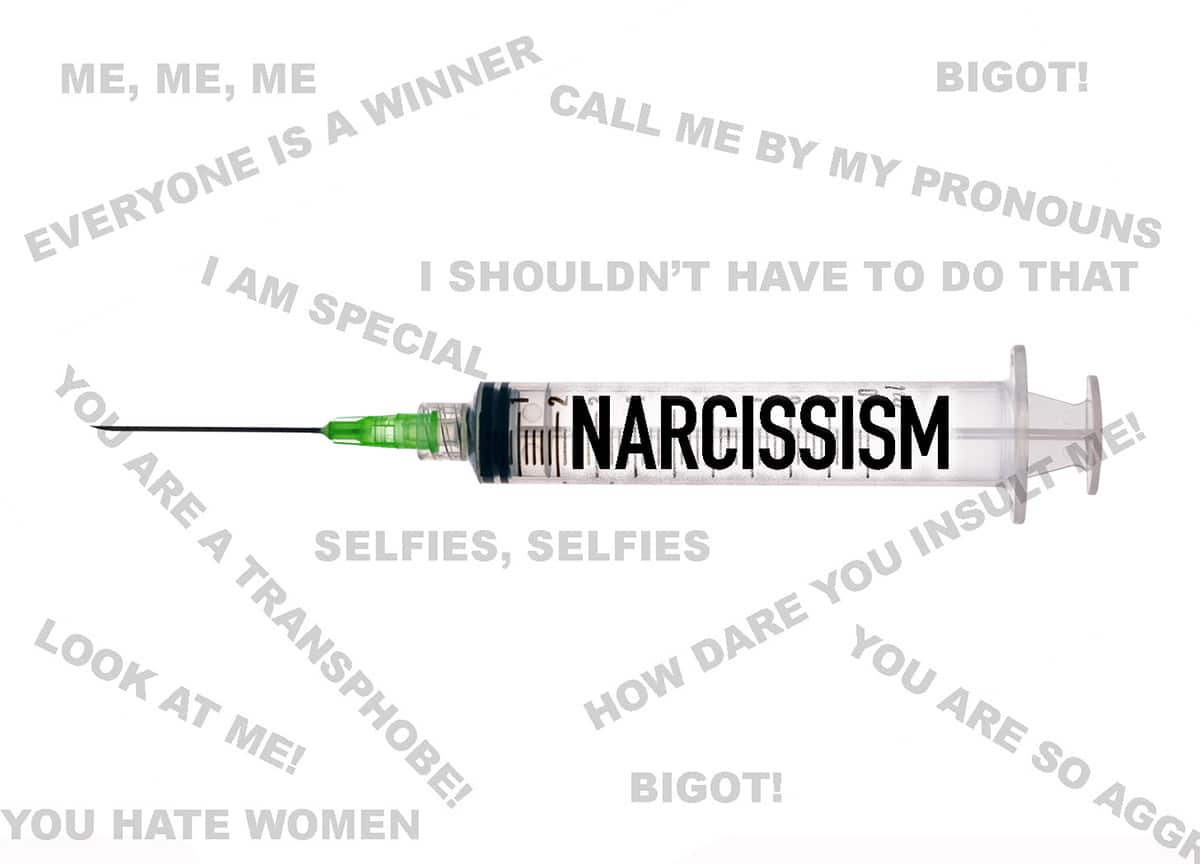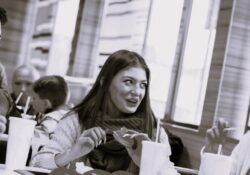by William Deresiewicz | May 15, 2023
I’m bored; you’re bored; we’re all bored. By our books and movies and television shows, the endless blandness of the Netflix queue, by our music and theater and art. Culture now is strenuously cautious, nervously polite, earnestly worthy, ploddingly obvious, and above all, dismally predictable. It never dares to stray beyond the four corners of the already known. Robert Hughes spoke of the shock of the new, his phrase for modernism in the arts. Now there’s nothing that is shocking, and nothing that is new: irresponsible, dangerous; singular, original; the child of one weird, interesting brain. Decent we have, sometimes even good: well-made, professional, passing the time. But wild, indelible, commanding us without appeal to change our lives? I don’t think we even remember what that feels like.
What accounts for this? Wokeness, of course, to begin with. The commissars are enemies of beauty. I’m channeling Dave Hickey here: Beauty incites desire, and desire is destabilizing. Desire is anarchic, and the commissars are control freaks. They tell us what we ought to want. The body positivity movement seeks to convince us, against the evidence of our senses, that all bodies are equally arousing. Amia Srinivasan, our philosopher of sex du jour, instructs us to reform our lusts according to politically acceptable parameters. So it is in art. Cancel Woody Allen, destroy that painting of Emmett Till, shut down The Vagina Monologues, and whatever you do, don’t laugh at Dave Chapelle (don’t laugh at all, just clap).
But this is much older than wokeness. Hickey was writing in 1993 (the essay is “After the Great Tsunami,” in The Invisible Dragon). He was attacking what he called “the therapeutic institution,” that glob of bureaucracies—“a loose confederation of museums, universities, bureaus, foundations, publications, and endowments”—that had placed itself in charge of culture, taming art by telling us that it was “good for us”: “enriching,” redemptive, conducing both to civic virtue and to spiritual health. Hickey dates that transformation to the 1920s and ’30s, naming as his leading culprits Stalin, Goebbels, and Alfred Barr, the founder of the Museum of Modern Art, but that seems to me both too early and too clever. The institution-building of the “culture boom” did not begin in earnest until after World War II, when a rapidly expanding middle class began to feel the need, as it rose, for the trappings of taste—“classical” music, European art, the great books as peddled by Mortimer Adler—and a brigade of explainers, promoters, and organizational functionaries stepped forth to fill it.
But it wasn’t until the 1960s that the business grew urgent. The culture was getting out of hand. The children of that same middle class were threatening to burn the whole thing down. It is no coincidence, from that perspective, that the decade witnessed the creation of the NEA, the NEH, PBS, and, in 1970, NPR: organs designed to furnish the college-going class with an officially sanctioned consciousness. The same years saw the overhaul of admissions practices at elite colleges and universities, those bastions of the WASP aristocracy. Jewish quotas were removed, affirmative action was instituted, and the great unwashed—or, at least, their future leaders—were now to be initiated into the cultural folkways of high Protestantism. Meanwhile, the MFA, which had been invented in the 1920s, was proliferating. From 1940 to 1980, the number of institutions awarding graduate degrees in studio art increased from 11 to 147, with comparable numbers in creative writing. Artists became creatures of the university: produced there and more and more often employed there, which meant socialized and homogenized there.
Art, in short, was being normed. After a century or so, as Hickey explains, in which it had evaded institutional control—a century of Parisian bohemians, modernist vagabonds, and visionary wackjobs, of Rimbaud, van Gogh, Nijinsky, Cage, Gertrude Stein, et al.—art was being standardized and, more importantly, moralized. The audience, in other words, was being normed as well. Orthodox faith was declining, at least among the liberal elite. Art emerged as a substitute religion, but a religion in the old, persistent American mode. Into culture flowed the moral energies of Anglo-Calvinism, in all its joyless, witch-hunting glory.
Art emerged as a substitute religion, but a religion in the old, persistent American mode. Into culture flowed the moral energies of Anglo-Calvinism, in all its joyless, witch-hunting glory.
And then a funny thing happened. American humanities professors, devoid of large ideas of their own, began to fling themselves at the feet of the new French theory. The denizens of allied institutions—museums, foundations, quarterlies—having been trained in those fields, knelt down beside their teachers. From this unnatural congress, Puritan zeal bred to post-Enlightenment philosophy, sprang the chimera known as wokeness, or in its adolescence, political correctness—new intellectual hooch in the same old moralistic bottles. “Somehow,” writes Hickey, “the delicate instrumentalities of continental thought had been transmuted by the American professoriate into a highfalutin, pseudo-progressive billy club with which to beat dissenters about the head and shoulders.”
For Hickey, the answer was the market. Dirty, demotic, democratic: The market is a playground of desire, the place we go to meet our needs no matter what the minister might think. But Hickey was writing about the art world, a realm of unique, expensive objects, where the market means collectors, people rich enough to purchase what they like and everybody else be damned. That’s not the way things work in most of the arts—music, writing, film and television—the ones that most of us consume most of the time. Those are mass markets, and they were also changing.
Labels started to consolidate. Publishing companies likewise. Large conglomerates began to buy them up, along with television networks, Hollywood studios, and high-profile magazines. The culture industry became more centralized, more corporatized—even in its upper reaches, more commercialized. Gone were independent-minded figures like Maxwell Perkins at Scribners, Ahmet Ertegun at Atlantic Records, and William Shawn at The New Yorker. New things still happened in culture, but they were rapidly converted into formulas, as with punk and hip-hop in the ’80s, grunge in the ’90s, indie movies in the 2000s, golden age television in the 2010s.
The point is not that corporations have degraded popular taste. It is the opposite. The culture industry, like the junk food industry, has gotten very good at satisfying it, at reflecting back our taste to us. And with the internet, the feedback loops have gotten ever more efficient. Art is boring now, in other words, because we are boring. Art is woke because we are woke. Art is bland and unimaginative because we have landed ourselves in the lamentable position of getting exactly what we want.
Matters wouldn’t be so bad had not the internet destroyed the economic underpinnings of artistic livelihoods. Content has been de-monetized: We pay little or nothing for music, writing, film and television, and many forms of visual art, with the result that incomes in those fields have cratered. Daring, original work has always been supported, at least at first, by coterie audiences. Now—with rising rents and dropping day-job pay on top of disappearing revenue—a coterie is not enough.
Wokeness can only exert its tyranny, in fact, because artists are operating on an economic knife edge. They do not have the luxury of alienating their audience, not even part of it or even for a little while. Not of shocking it, not even of challenging it. And wokeness also acts to hide the deeply repetitive nature of contemporary culture. “Diversity” becomes a cloak for uniformity. The same old thing—the same kitsch pop songs, middlebrow fiction, wish-fulfillment streaming fare, agitprop gallery art—produced by a member of a “marginalized” “community,” convinces us that we have gotten somewhere new.
We are boring, but we have always been boring. You know who isn’t boring? Artists. Artists aren’t like you and me. Their brains are different; their souls are different. I don’t know where that difference comes from, but I know it’s real. Its hallmark is precisely the capacity to bring the new to birth. “None of us is as smart as all of us” goes the hive-age bromide, getting it exactly wrong. All the weirdness that we’re missing now, the wild originality, can only come from the activity of singular spirits: contemptuous of imitation, courageous in the extreme, obedient to nothing but the effort to achieve their vision. They are out there, I know, they are doing their work, but only on the margins, in the cracks. Expose them to the light, give them some mainstream attention, and instead of dragging us a little way in their direction, as they would have once, they just get homogenized, too. And it is tough; it’s very, very tough. Creative work, wrote Elizabeth Hardwick, “is difficult, hard, and disturbing in the deepest way. You are up against the limits of yourself, your mind, your knowledge, your talent, your courage, your fineness, your energy.”
That is where the rest of us come in. We can’t help being boring, but we can help being lazy, and we are lazy now as never before. It is easy to laugh at the postwar audience, with its aspiration to culture, but at least it aspired. At least it felt that lack. Aspiration was indeed an obligation then, at least in certain precincts. I’m thinking of the college students of the 1960s and ’70s, the seriousness with which so many of them set about the task of winching themselves up to a higher level of consciousness: reading Kafka and Sartre, watching European films, scrutinizing modern art, puzzling out the messages of Joni Mitchell, Patti Smith, Bob Dylan, Lou Reed. It was her embodiment of that approach to life, as much as anything, that made Susan Sontag a cultural icon. I don’t much see that kind of aspiration anymore (it was already fading out when I arrived on campus in the early ’80s), that sense of urgent incompleteness, that hunger for a higher other. What I see is narcissism: a demand that art affirm us, never threaten us, never make us feel inadequate or ignorant or small, echo back to us our precious little selves.
A great audience, Fran Lebowitz once remarked, is more important for the creation of great art than even great artists are. She was thinking, in fact, of the postwar audience, specifically in New York, the one that nurtured Balanchine, Rauschenberg, Miles Davis, and so many others. Great audiences create great artists, she explained, by giving people the freedom to take chances: to be irresponsible, dangerous, difficult, strange. When people compete to be sophisticated, artists win. Then we all win.






